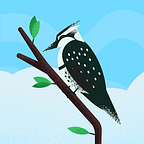Information As Thing
When we form categories of entity and process for the principle uses of ‘information’, a distinction naturally occurs between information as process, which is a process as the name indicates, versus information as knowledge and information as thing, both as entities. More specifically, based on their tangibility, the intangible use of ‘information’ would be information as knowledge and the tangible use is information as thing.
Information As Knowledge
What intangibility implies for information as knowledge is the immeasurable and nonphysical characteristic per se. Whether as an idea, a belief or a thought, information as knowledge can not be directly measured in any way. Some theorists hold objection to the denotation for information as “the physical representation as signal, text or communication”. Wiener, in his assertion, excludes energy and material from the definition of information. Machulp takes his definition to another level and limits the definition to include “the telling of something” for one part and “that which is being told” as the other. Wersig further restricts the telling to be of an intentional process. It would appear that each theorist has defined information as knowledge differently. However, in its essence, the information as knowledge usually requires two parties, one presents the information while the other one receives. Being aware of the grammatical rules of a language can fall under the category of information as knowledge since as a foreign language speaker, I would now apply that in my conversations, maybe not perfectly sometimes, but my speaking habits are thus influenced and I hold the intention of speaking grammatically correct sentences.
Information As Thing
On the other side, ‘information as thing’ would be entirely opposite from ‘information as knowledge’ regarding its position on the spectrum of tangibility. Information as thing needs to be touchable and measurable, such as signs, signals, data, texts and films. In addition to that, when information as knowledge needs to be expressed and conveyed, the physical form adapted is information as thing. In the article, Buckland explores the broad definition which could be associated with ‘information as thing’ but concluded that simply identifying “everything as ‘information’ is unhelpful”. This result leads to Buckland’s further analysis on what accredit ‘information as thing’ in meaningful senses, to which he answered, is dependent upon whether an object or event would eventually be informative, with an exact position in time and space, and with predictable informative characteristics. Following this guideline, one example I can think of for information as knowledge is the course schedule. As a student, the information I hold for when to go to which class was informed by a specific instructor, probably from Canvas, a course website or emails, being informed in turn shapes my behavior of where and when I will go to class.
Information As Process
From the abstract ‘information as knowledge’ we generate to the actual “written out” form of ‘information as thing’, the intermediate process is called ‘information as process’. You can think of ‘information’ as a verb now, and I apologize for just claiming that I intend to speak grammatically correct sentences, but as information becomes a process of communicating over certain objects, events or facts, doesn’t it seem a bit more like an action now? At the beginning of the pandemic, most public facilities from where I live had mandatory rules for wearing masks, though I had seen a few people being advised to put on their masks before entering the place. The act of the store assistant has demonstrated ‘information as process’, for those insisted on not wearing their masks, what they know now is changed, being they are required to cover their faces at these stores.
Citations:
